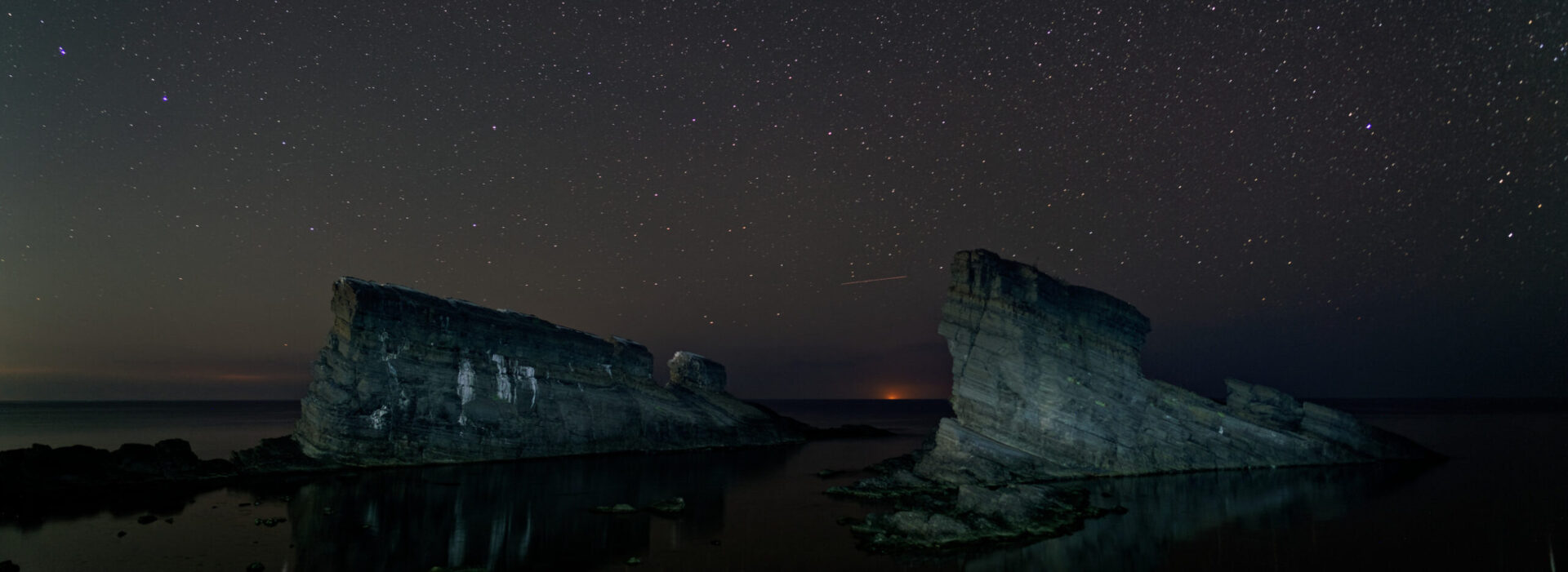Learning Photography from a Marine Sniper
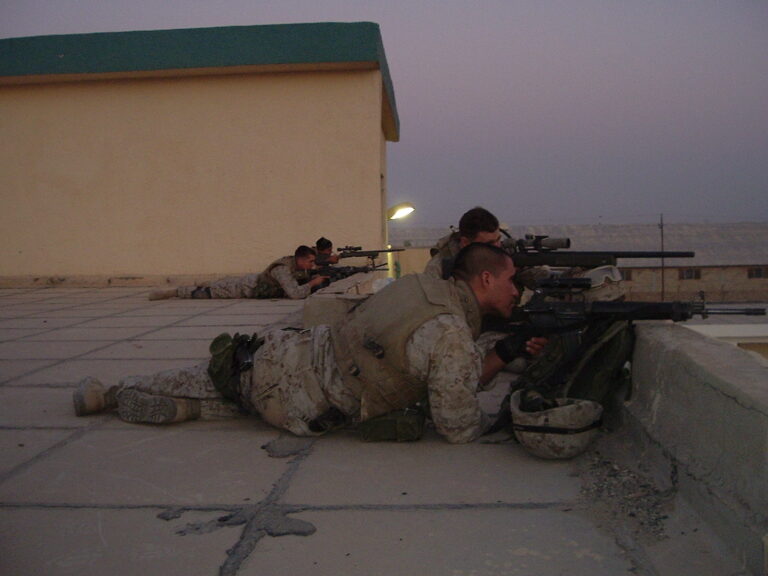
Having served as a Marine Scout Sniper, I’ve had an opportunity to develop my observation skills. I believe this has significantly contributed to my development as a photographer. So, this week I’ll kick off this potentially on-going series, Learning Photography from a Marine Sniper. The intent will be to discuss some of the ways in which we can learn photography from various sniper standard operating procedures, tactics, techniques, and skills.
As I wrote in, Developing a Photographer’s Eye, I don’t believe that the ability to see photos is an innate ability. Conversely, it’s a learned skill that each photographer develops in unique, individual ways, at varying rates and degrees.
Hopefully, you will get something from these tips, which are specifically based on sniper experiences. Although, most importantly, I hope you will see how to apply your own knowledge and experiences to your photography as well. Don’t discount your own unique experiences. Learn to incorporate them and hone your craft from them.
Also, for the sake of more authenticity I’m going slightly revert back to some military-style speech, so I apologize in advance.
Planning and Preparation
Let’s begin with a general concept that expands beyond military service and into everyday professions and parts of our daily lives – planning and preparation.
The military loves abbreviations, acronyms, and adages. They are quick and effective tools for communication and, in the same manner as slang speech, signal belonging to particular a group. Some of the most introspective and intelligent people I’ve met have served, or continue to serve, in the military. On the other hand, I’ve also met a fair share of Gomer’s, Fred’s and *soup sandwiches who need things “broken down Barney-style.” So, for these shit-bricks the abbreviations and acronyms can be helpful for memorization and to make it throughout the day.
* Imagine, if you will, a sandwich lovingly constructed out of bread and soup. Now, reimagine this useless mess in human form. Additionally, this term can apply to a situation that is in absolute disarray.
The 7 P’s
The 7 P’s is a military adage. There are several variations, but in the U.S. Marine Corps it stands for Proper Planning and Preparation Prevents Piss Poor Performance. Although this is an adage that is applicable for any military occupation, it’s particularly important for military snipers.
In general, snipers deploy in teams of two or four. Conducting small unit operations has its benefits, especially when we take sniper missions into consideration – reconnaissance and surveillance operations to gain intelligence on the enemy and the terrain with the capability to provide long-range precision fires on selected targets or targets of opportunity. Operating in small units allows for more efficient movement and easier concealment. However, the limited manpower has weaknesses as well. One way to counteract weakness, in any form or situation, is planning and preparation.
Planning is essential for mission success. In all likelihood the plan will partially, if not completely, shit the bed at one point or another. Still, that initial plan provides some basis to work with. If anything it’s something to fall back on and consider before you revert to full blown panic mode.
In preparing for battle I have always found that plans are useless, but planning is indispensable.
– Dwight D. Eisenhower
7 P’s and Photography
Whether you’re shooting landscape, portraiture, fine art, product, sports, architectural, wedding, event, photojournalism, or any other type of photography, some degree of planning and preparation is necessary for success. The amount of planning and preparation can vary, but it doesn’t take away from the benefit fo planning.
Planning in photography can come in several forms. It can be as simple as checking the weather report or searching Google or Pinterest for shot or location ideas. You might look into new techniques. Or you might plan the exact location and time of sunrise or chart the position of the Milky Way at a certain coordinate. If possible, physically scouting a location before hand is very helpful to understand lighting and potential shot locations.
I kind of bundled preparation and planning together. In the same way snipers maintain their equipment, especially cleaning and maintaining their rifle, a photographer should maintain and prepare their gear. We want to make sure batteries are charged, memory cards are ready to go, lenses and filters are cleaned, and all necessary equipment is packed before you head out the door.
Oopsie Example
Last week I went on a trip to the beach. Planning was in the cards, but I successfully failed. I brought my charger since I knew I would be taking more long exposure shots. However, I didn’t bring my adapter for European outlets. I was stuck with 3 batteries and had to make it work. Star trails were definitely out of the picture.
Several lessons to be learned here and I’m sure I’ll still mess up in the future. But I appreciated the practice of making do with what was available (another Marine thing since it sometimes feels like we got the best hand-me-down gear Uncle Sam could find at the local army surplus store). All-in-all, it was good practice in working effectively and efficiently.
If you’re really serious about avoiding these mistakes. Make a check list with all the equipment you will need. Then go with a “junk on the bunk” Marine Corps inspection style rundown before you pack. Lay out all of your equipment you wrote on the list. Then mark the item off the list once you place it in your bag. This is a bit anal retentive, but it works. Even if you don’t do the check list, it’s a good packing method, in general, to visually ensure you have everything you need.
Anyway, how and what you plan for will vary. You’ll inevitably plan poorly at some point and/or forget something somewhere. And there is always a bit of luck involved. But adherence to the 7 P’s will increase your odds of capturing a shot you can be proud of.
Luck is what happens when preparation meets opportunity.
– Seneca
Color, Contrast, and Movement
Military, especially snipers, and hunters will likely be aware of the concept of color, contrast, and movement.
Whether we are moving into position, observing, or stalking those three elements contribute to seeing what could turn out to be a threat. They are individual elements that we may notice before actually recognizing what something is. For example, we may notice a color and its contrast to the environment before we actually realize that it’s a piece of clothing. Snipers are not only trained to pick up on these elements in order to recognize potential threats, but they are also trained to understand these concepts to remain unseen by an enemy or jumpy *butterbar.
These concepts can also be beneficial to seeing and making photos that are attractive to a viewer. The photo below is an example of using all of these elements.
Let’s discuss each a little further…
* A junior commissioned officer, second-lieutenant who tends to lack experience. The insignia is a gold bar, hence the slightly patronizing nickname.

Color
This first topic is a relatively simple one. This doesn’t apply in the same manner for a photographer as it does for a sniper, but it still does apply nonetheless. When traditional camouflage comes into play, such as in jungle or wooded areas, colors tend to be more natural green and earthy colors and tones. One of the first things that a sniper can pick up on is color. When scanning our surroundings color captures our attention. Being rather combat fashion conscious, snipers will utilize the colors that match their immediate surrounding. They will sometimes change elements of their camouflage as they move, but more on this later. For example, we don’t usually wear woodland camouflage in the desert and neon colors are generally frowned upon when trying to be sneaky.
Color and Photography
How color is recognized and utilized is obviously different for a photographer. Wherever you may be, color is a key factor that stands out to the human eye. Since our eyes tend to be drawn to color, especially bright ones, pay attention to this. When a color stands out to we take notice. If it is drawing your attention, then perhaps you can find a way to make a photo utilizing that alluring color.
However, although color is its own category, in reality it’s the contrast that makes color so appealing and attracts the eye. So, let’s discuss that next.
Contrast
Contrast refers to the difference in color, tone, or shape. Snipers are well known for using ghillie suits. Ghillie suits are the camouflage clothing used to blend in with the surroundings, whether foliage, sand or snow. As a sort of right-of-passage, snipers will usually make their own ghillie suits. They are highly effective if they are made and utilized properly. However, if they are made in standard Hollywood fashion, you can end up looking more like you’re wearing a rejected Wookiee costume design found in a production studio backlot yard sale (not sure if those actually exist).
Stalking
One exercise snipers use to hone their skills is stalking. It involves moving across a field toward observers on the opposite end of the field. The snipers take advantage of the surroundings to remain concealed while the observers attempt to spot them. The snipers will add foliage to their ghillie suit to blend in, switching foliage as necessary, as they move across the field. Snipers will attempt to get as close to the observers as possible to take a simulated shot on their targets. The observers are then told the general vicinity of the sniper and attempt spot exactly where the sniper is concealed.
Successful stalking depends on understanding color and contrast. A sniper must not let the color or tone of their clothing, equipment or skin be in contrast to their surrounding. However, shape is also an important part of contrast. The human eye naturally sees shapes and forms that are familiar. This is why we see animals in cloud formations or faces in water stains. It is also what can make poorly camouflaged snipers stand out to observers and what makes ghillie suits so helpful.
Attaching foliage to a ghillie suit breaks up the common pattern or shape of the human form, making it less recognizable. Camouflage paint also uses the same principles as a ghillie suit. It is intended to limit contrast. It removing the shine and color contrast from skin, while also breaking up form, the natural features of the human face.
Broken form and taking advantage of color, and the foliage itself, can make it very difficult to see a well camouflage sniper. The photo below is of myself during a stalking exercise using only the veil of a ghillie suit. Sorry for the bad quality, it was back in the disposable camera days. I’ll reveal my location at the end of the article.

Contrast and Photography
If you consider a complete scene with a single color and tone, everything would blend in and nothing really stands out. If there is a single tone, or only a few similar tones, shape can help distinguish difference. Although not standing out might be ideal for a sniper, it’s kind of boring for a photo. As snipers use ghillie suits to break up their form, they also look for contrast to find targets and threats.
So, what our eyes will often pick up is not just the color, but also contrast. Some contrast is normal. Snipers acknowledge and play off of this, as you can see in the photo above. The same should go for photography. Be aware of contrast, but rather than use it to have your subject blend in, you want to have your subject stand out.
When we see a bright red car parked among rows of black cars. The red car stands out in contrast to the black cars. Shapes can also be taken advantage of to create interest and impact in a photo. Street photography often uses the shapes of buildings, as well as dark and light contrast of shadows, to create points of interest and establish artistic vision.
Look for these types of contrasts, whether they come from color, tone, or shape. When you find them pay attention to how they work together to bring attention to your subject or help to complete your vision for the photo. As with color, they may initially draw your attention without you understanding why. Stop and look, scan the area, find the photo that beckons.
Movement
Motion attracts attention. It’s utilized to draw attention when stores design displays to attract customers. Static displays and signs just don’t have the same impact as those with some element of motion. This is why construction zones often use blinking signs to attract drivers’ attention to make sure they are aware of the road conditions.
It’s also why all those “classy” restaurants and furniture stores hire some 16 year-old kid to spin a sign on the corner of a busy intersection; pointing us in the direction of guaranteed culinary disappointment and intestinal regret or a couch with cushions that will fail to retain its shape after binge watching 2 seasons of 90 Day Fiancé (don’t ask…). There is a healthy dose of shame in both of these cases, of course. Now, what was my point?
Oh yeah, Snipers are aware of movement. When stalking or in a static position snipers must pay attention to how their movement can comprise their position. Something as simple as a slight shift of positions can create an unnatural movement pattern in tall grass and alert a vigilant observer to a sniper’s position. This means snipers may be forced to move at painstakingly slow speed to avoid detection. Fun!
The Science...Kind of
The science behind the perception of motion is complicated. I don’t have the knowledge to discuss this in-depth, but I’ll cover the basics as far as I’m aware. Spoiler alert: I’m not a scientist.
Our eyes and brain react to movement. A lot of this is based on the brain and its Duracell-like insistence on figuring out ways to keep us alive. The brain evaluates movement as a survival mechanism and has a bias toward motion. This bias towards motion is based on our fight or flight response. When motion is detected we instinctively become aware and perceive it as a potential threat. This makes us pay closer attention to this potential threat and allows us to determine the proper response.
Additionally, our peripheral retina is especially sensitive to movement. Color and recognition of the object is not so much registered by our peripheral vision as much as motion. Once we notice the movement, the central zone of the retina, which is more attuned to detailed color and pattern vision, is drawn to the moving object to allow for further analysis and recognition.
Many of us have seen a cat stalk prey. They move slowly for the same reason a sniper does, it’s an attempt prevent drawing attention.
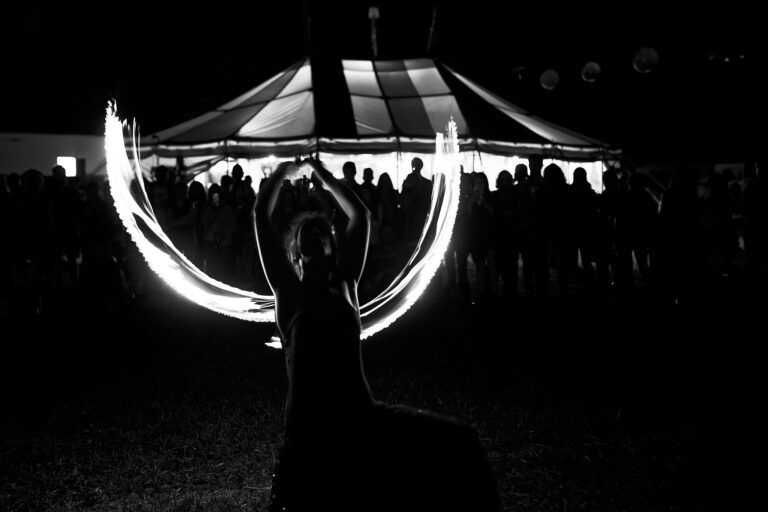
Movement and Photography
We live in a busy world these days. There is a great deal of movement in our everyday lives. Movement might draw attention in the field or on the streets. Implementing various methods to capture movement in a photo gives us creative opportunities to draw attention, portray ideas, and provide impact.
We can imply motion through the use of slow shutter speeds. This can be draw the viewer into a particular aspect of the scene and is commonly seen in photos of waterfalls or cars. However, sometimes we may want to freeze motion with higher shutter speeds. In doing so, we present the viewer with a view of a subject that is generally moving. This gives the viewer a glimpse that might be unique or different from what they experience everyday or in-person. For example, capturing a Formula One car which normally appears as a blur to the naked eye.
Another technique we might use is with a shutter speed that is somewhat in-between. It’s not fast enough to freeze all motion so it allows for some motion blur. This can result in a photo that has some elements being frozen and with others blurred, or slight blur throughout. It allows the viewer to see more of the subject while also getting a feeling of some of the action through a sense of movement.
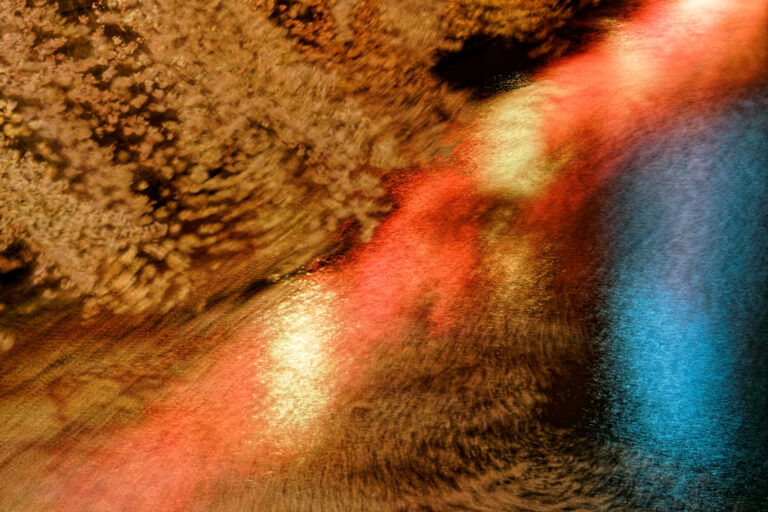
Panning
Another fun trick is panning. This involves using a slow shutter speed along with camera motion to give a sense of motion around the subject. In other words, instead of that race car being blurry with a frozen background, the car is in-focus and frozen with a blurry, streak-like background. This is accomplished by combining a slow shutter speed and, while maintaining focus on your subject, moving your camera in the same direction of your subject. Give it a try, keep practicing, and you can end up with some really interesting results.
Sniper Hides
One more random bit of information to share for those of you that might be interested.
A hide is a temporary position constructed by snipers in the field to provide concealment from which they are able to observe and engage targets. They are very much like a stationary ghillie suit for a sniper. Hides utilize the same principles above; color, contrast, and movement. Many of the materials used to construct a hide are found in the field and mimic the surroundings in order to blend in.
The colors, tone, and use of contrast are important. Shadows occur naturally based on lighting, but shadows that appear unnatural can be indicators of something out of place. Just because a hide isn’t meant to move doesn’t mean movement isn’t a potential issue. Snipers must be care not to draw attention by their own movement within a hide. Creating shadows within a hide that are effective and appear natural can help mask movement.
Pay attention to shadows when taking photos. They are powerful elements to play with and can help you create drama and impact. They can also help bring focus on your subject. Shadow is particularly effective in black and white photography.
A Bit of Non-Photography Practice
For many of us, COVID has limited our exploration to some degree. Furthermore, with autumn somehow already here and winter on the way, there are bound to be some cold and miserable days where you prefer to stay indoors. One way unconventional way to work on your photography is through puzzles. Yes, puzzles. Jigsaw puzzles.
When is the last time you did a puzzle? It had been since childhood for me, until Peace Corps, living in Kosovo, -25 Celsius winters, and wood stove heating (which didn’t always do enough to counteract the holes in the doors). But this desire to stay by the fire did rekindle (intentional pun) my enjoyment for puzzles. I came to realize I can obsessively stare at a puzzle for hours. Eventually, I understood why puzzles are attractive to me. It’s all very familiar. I’m observing. I scan the laid out pieces using similar techniques from the military. I’m looking for color and contrast.
Side note: Movement comes when I get frustrated and slap the pieces on the floor. There’s a cute dog puzzle that for some reason I haven’t completed. But this is the year…I feel it.
No Seriously...Puzzles
Let’s say I’m searching for a certain piece.
First, I look at the image on the box to see what I’m looking for. Next, I look at what I’ve completed so far. I take the knowledge from the box image and the completed sections to figure out color and contrast. What color is the piece I’m looking for and what is the shape? Not just the shape within the image, but the shape of the puzzle piece itself. How many holes or circles on the side does it need to have to fit a section? Is the hole large or small?
I don’t look for the piece. I scan and let color and contrast stand out on its own and bring me in. Once I see a piece that might fit, I try it out. But it’s the initial scanning for color and contrast, that comes very quickly and naturally to me. I’m often surprised how quickly I can find a piece and immediately know it’s the correct one.
Why Puzzles?
Now that I’ve stroked my ego a bit, let’s get back to the point. Why Puzzles?
Puzzles help develop visual-spatial reasoning. This is the ability to imagine or visualize the positions of objects, shapes, and spatial relations to one another and the movement they make to form new spatial relations. Combine this with color and contrast elements and you have a tool that can help you develop the ability to observe. This will also help you understand perspective.
The ability to understand perspective and potential use of different perspectives is important. It’s beneficial for developing an eye for photography as well as creative vision. Whereas one person might take a photo straight on, a person with more developed visual-spatial reasoning might automatically recognize the potential of taking a photo from a lower position. Thus, changing the angle and creating a unique look and perspective.
Final Word
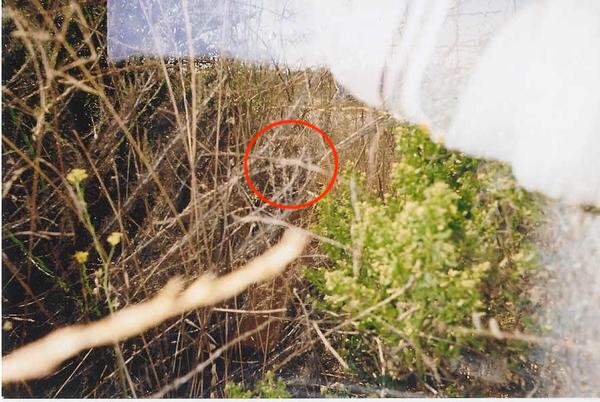
And here’s my location from the stalking photo.
Well, that’s it for now. There is a lot more I could get into, but this has gone on long enough. I hope you enjoyed part one of this series. If so, let me know in the comments and I’ll make sure I don’t wait too long to work on the next part.
If you’d like to share some shots from what you learned about color, contrast or movement, or any other photos, tag me on Instagram, @ted_stanton_photography, along with your photos.
Also, check out my free ebook, 5 Unique Photo Challenges, for some inspiration. Sign up for the Photography Insight Journal using the form at the bottom of the page to receive the link to download a copy.
